Data-driven AI tools for skill evaluation
Gain insights into people’s performance across your company. Assess skills, track development trends, and align them with business strategy – all automated through evaluation forms and AI agents.
- 14 days free
- No credit card required




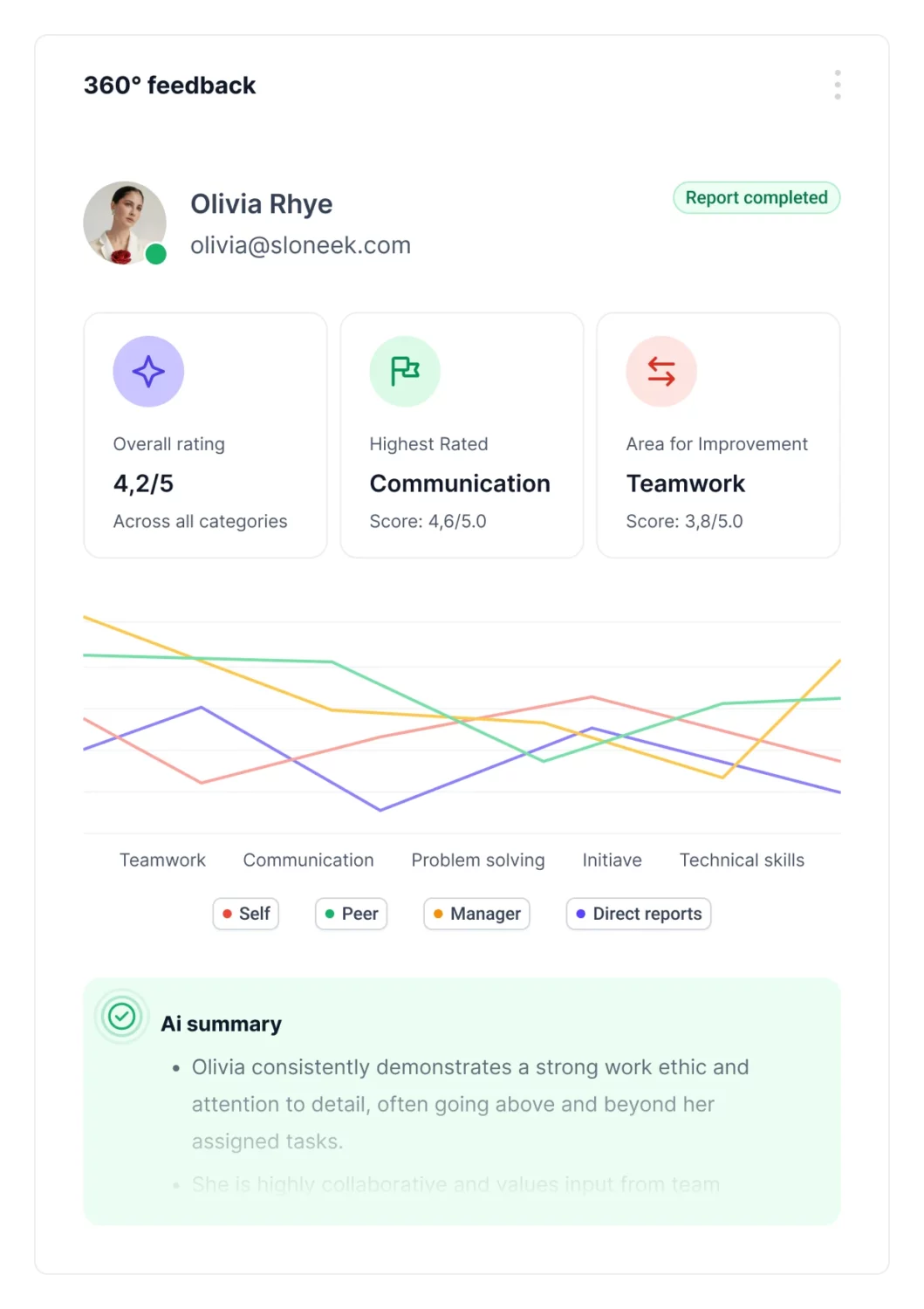
AI-driven 360° feedback
Get an unbiased view of people's skills across the entire company. Evaluate both soft and hard skills, leadership, and collaboration. From a 90° to a full 360° evaluation.
-
AI questionnaire generation
-
Evaluation of soft and hard skills across the entire company
-
Flexible settings: 90°, 180°, 360°
-
Automated evaluation and recommendations
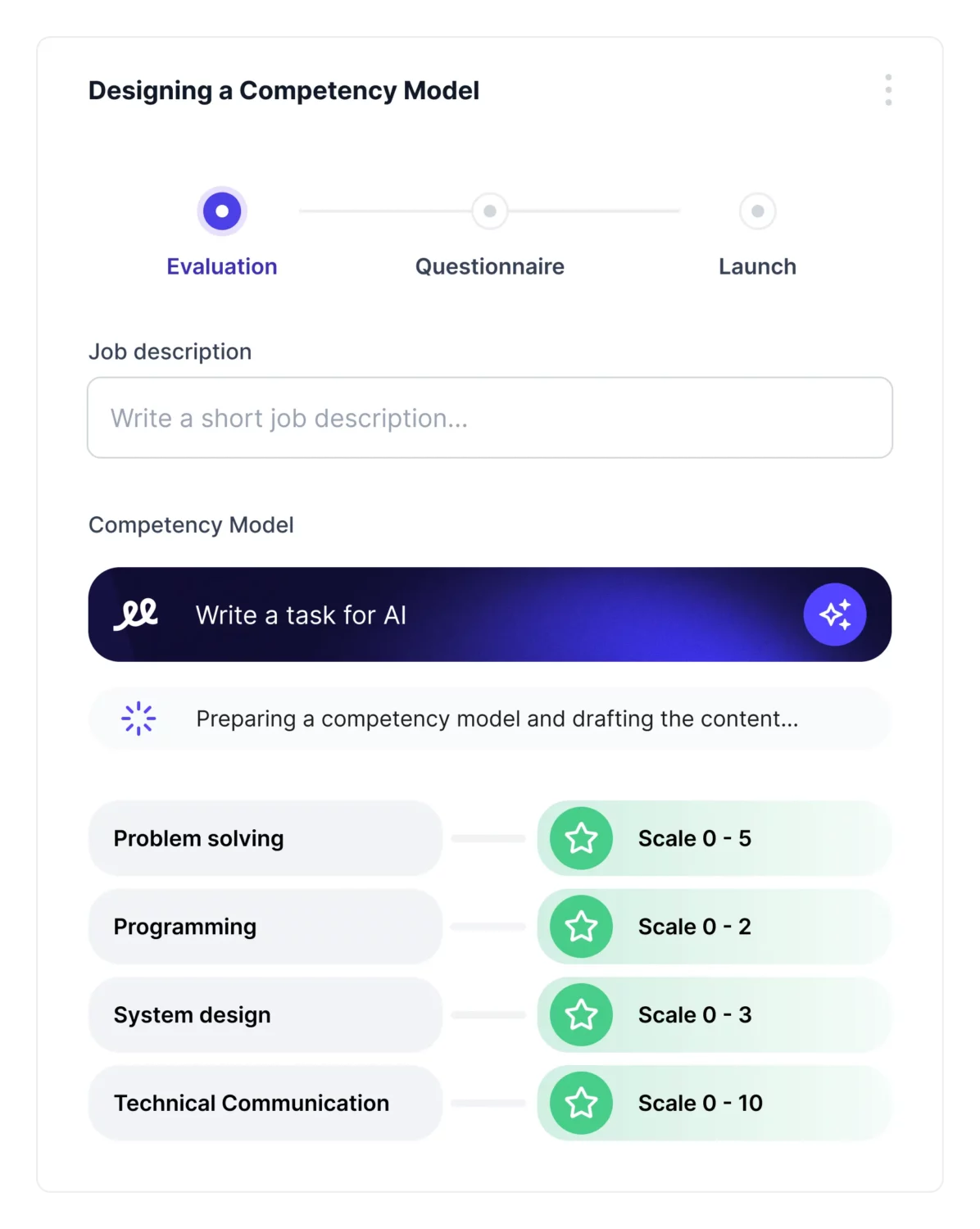
AI-driven competency evaluation
Gain an unbiased view of your people’s skills across the entire company. Evaluate both soft and hard skills. Get a clear overview of how skill sets evolve over time.
-
AI-generated questionnaires
-
Long-term development tracking
-
Identification of strengths and weaknesses
-
Smart personal development recommendations
-
Advanced analytics and a clear dashboard
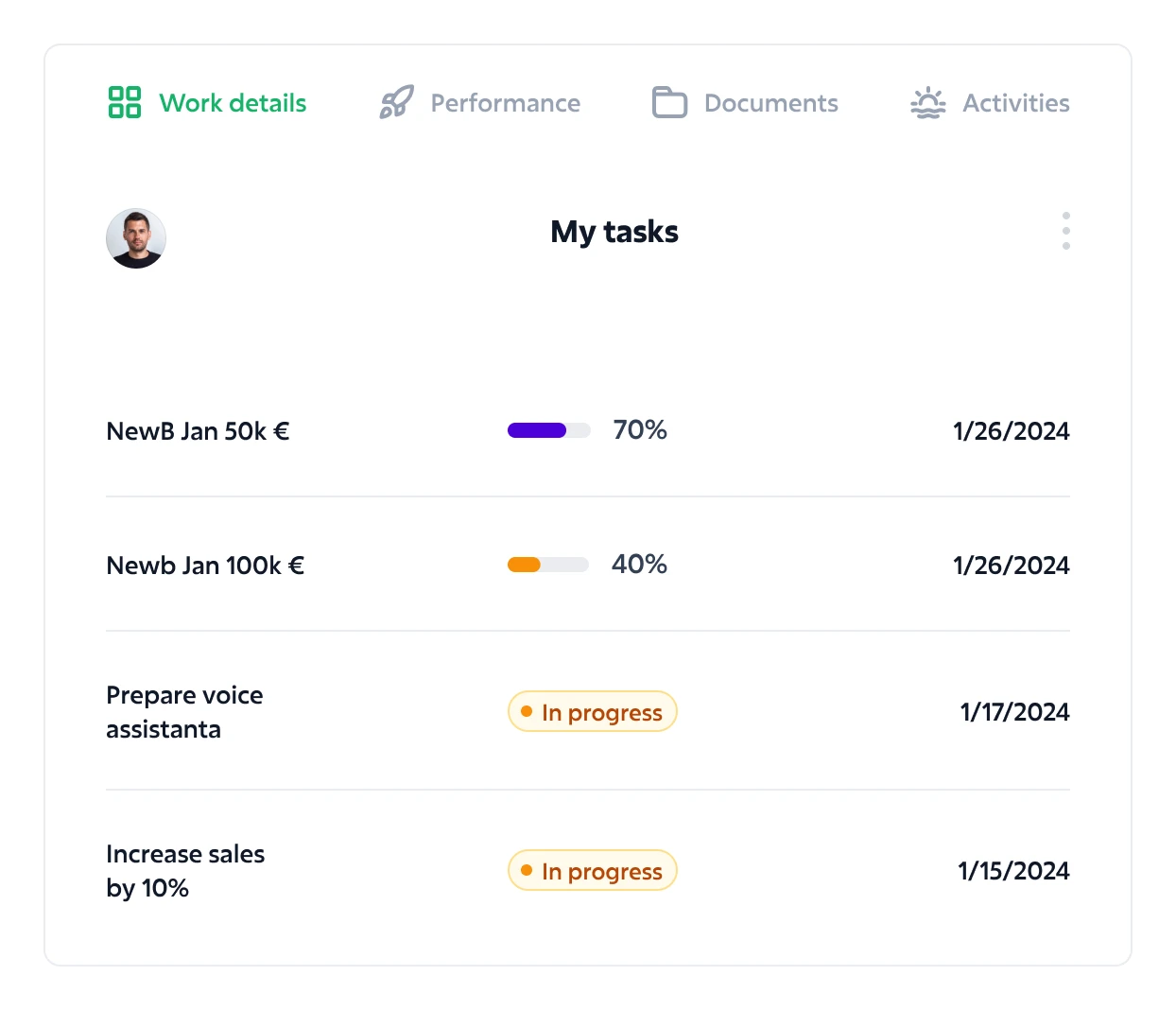
KPI
Key Performance Indicators
Gain insight into the performance of teams and individuals against set goals. Track work efficiency over time and compare results across the company.
-
Overview of KPI performance at team and individual levels
-
Cross-department comparison
-
Automatic goal completion calculations
-
Identification of unmet goals and obstacles
-
Advanced analytics and clear dashboard
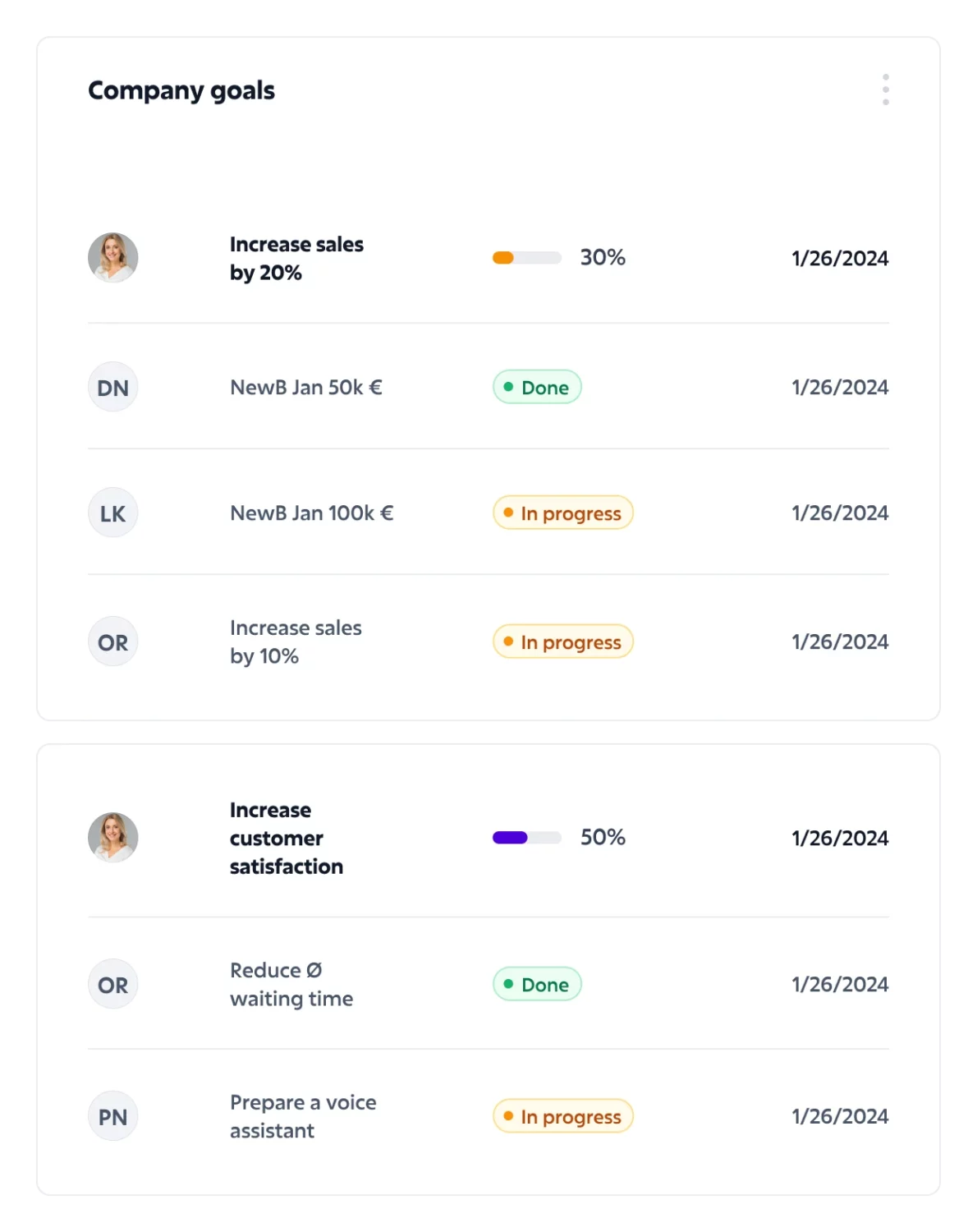
OKR
Objectives and Key Results
Set meaningful goals and track measurable progress across the entire company. Suitable for all levels — from individual tasks to strategic objectives.
-
AI-generated goals and key results
-
Engagement of individuals and teams in OKRs
-
Real-time progress and results
-
Ongoing evaluation and goal adaptation
We are here for you
Can we help you?
Our experts will answer questions, show you Sloneek , and help modernize your HR.
- Superior onboarding
- Introduction of all functionalities
- Presentation and offer tailored to your HR
- Answer any questions




Leave us your contact details, we will get back to you.
How Effective Performance Management Boosts Productivity and Supports Business Growth
Performance management, or managing performance, is a key element of any company’s success. When done right, it not only enhances productivity but also inspires employees, engages them, and helps them feel like an indispensable part of the team. Well-designed processes can uncover hidden talents as well as areas for improvement. In this article, we will answer the question: what is performance management, and how can it help us?
The Importance of Performance Management and What It Can Offer You
The performance management process is the key to aligning goals, improving efficiency, and supporting the continuous growth of employees and the organization as a whole. It influences not just individual outcomes but also the overall performance of the organization. When implemented smartly, it aligns employees’ personal goals with the company’s strategy, thereby boosting productivity.
It’s crucial to set clear goals, regularly assess results, and provide constructive feedback. Performance management is not just about spreadsheets full of numbers; it’s about continuous communication and focusing on what truly works. When everything falls into place like a well-tuned machine, results follow, and the company’s growth accelerates. This ongoing performance management cycle clarifies performance expectations and ensures that every effort contributes to overarching company objectives, turning business performance management into a dynamic engine for growth.
Enhancing Team Efficiency
Performance management is central to achieving greater team efficiency. By setting clear objectives and regularly evaluating performance, you can better leverage employees’ individual strengths, optimizing task allocation and time management. Performance analysis based on KPIs reveals performance trends and allows quick responses to potential issues. This leads to a better-coordinated, more productive, and efficient team.
Increasing Employee Motivation
If you want a team that gives its best, you need to properly reward their efforts. When employees see that their hard work is acknowledged, their motivation grows. And it’s not just about financial rewards—it’s also about recognizing their work and dedication.
Employee Development: An Investment in the Future
An essential part of effective performance management is supporting the long-term development of employees. This includes training, mentoring, or career growth opportunities, such as certified courses or workshops. A systematic approach to skill development not only enhances employees’ work performance but also contributes to the overall competitiveness of the company. Integrating career development into performance reviews helps with long-term career planning. A robust learning management system can support this by offering targeted training and development through various training programs and leadership development programs.
Communication That Truly Works
Finally, performance management means better communication within the company. Regular meetings and feedback sessions are ideal for maintaining an open dialogue—both in one-on-one settings and team workshops. Clear and transparent communication prevents misunderstandings and ensures that processes run smoothly. Modern feedback tools enable continuous feedback and real-time feedback, fostering a culture of ongoing performance coaching rather than periodic reviews.
Tools and Methods for Performance Management: How Does Sloneek Help Overcome All Challenges?
Using the right tools and methods is crucial for effective performance management. The ideal approach combines modern technologies, regular meetings, and clearly defined indicators.
Software for Performance Management
Leverage software like Sloneek, which allows you to track and evaluate key performance indicators automatically and effortlessly. With Sloneek, you can document the development of individual team members’ skills and create customized skill sets based on specific users, their roles, team affiliations, or seniority levels. Additionally, Sloneek enables you to monitor how your team’s skills evolve over time and use this data to efficiently plan their future development. Modern talent management technology, often delivered via a cloud platform, leverages artificial intelligence for automated performance management. This provides valuable talent insights through features like natural language processing, making the entire process more efficient and data-driven.
Individual and Team Meetings
Regular individual and team meetings are key to effective communication and goal alignment at all levels. During one-on-one sessions, you can delve into performance details, provide feedback, and plan further development, which enhances individual motivation and growth. Team meetings, on the other hand, provide a space for assessing collaboration, sharing successes, and exploring ways to improve collective outcomes. Whether these meetings happen daily or monthly, they form the foundation for continuous growth and improvement.
Set Clear and Motivating Goals
Clearly defined and measurable goals help employees better understand their tasks, making them easier to achieve. Using the proven SMART methodology helps focus attention on tangible results—no abstract visions, just real goals worth striving for. Effective performance planning aligns employee goals with company objectives, ensuring everyone is working in sync with the broader strategic plan.
Performance review tables are great tools for providing an overview of results. They highlight successes and compare actual outcomes with the goals set. These tables help clarify your progress in areas like productivity, work quality, or customer satisfaction. Best of all, they allow you to concentrate on what matters most and fine-tune strategies to drive results upward.
Identify Bottlenecks, Provide Feedback, and Optimize Processes
A systematic approach to performance management can reveal weaknesses that would otherwise remain hidden. This could be due to poor communication or the need to reassign tasks.
Fast, relevant and clear feedback allows employees to continuously improve their work and feel truly valued. Feedback should be balanced, including both praise and constructive criticism, which will support further growth and motivation. When performance assessments indicate a need for intervention, a formal performance improvement plan can provide a structured path forward. This approach to talent management ensures that the performance appraisal process is constructive and focused on development.
Shifting from Annual Reviews to Continuous Management
The shift away from traditional annual reviews towards continuous performance management is transforming workplace dynamics. This modern approach fosters a strong performance culture, boosts employee engagement, and leads to performance acceleration by making feedback timely and relevant.
It is important to realize that a performance management system is not just about current results – it is an investment in the future that supports long-term development, creates strong teams and increases the competitiveness of the organization.


